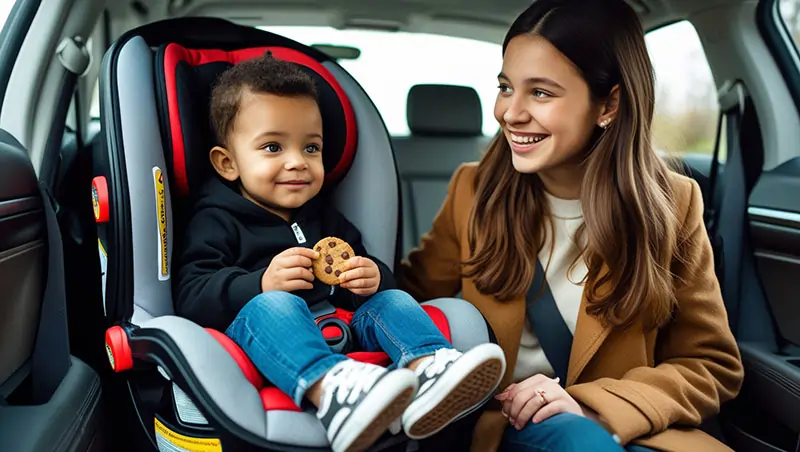A Look at Nevada’s Child Car Seat Laws
In Nevada, the law requires children to be in an approved child restraint system (car seat or booster seat) until they reach a certain age, weight, and height. These regulations are essential for reducing the risk of injury.
Nevada is a state of the United States of America. It borders Oregon and Idaho to the north, Utah to the east, Arizona to the southeast, and California to the west. According to the National Highway Traffic Safety Administration (NHTSA) of Nevada, proper use of car seats reduces the risk of fatal injury by 71% for infants and 54% for toddlers.
Understanding and adhering to these laws can significantly increase your child’s safety when traveling in a vehicle. And if you’re a parent wondering what age a kid can sit in the front, read on; this article is for you.
Child Car Seat Laws in Nevada
Nevada’s child car seat laws are detailed; parents must follow them to ensure their child is secure in the vehicle. The rules are primarily governed by Nevada Revised Statutes (NRS) 484B.157, which outlines the requirements for child restraint systems.
Children younger than six and under 60 pounds must be secured in a proper child restraint system. This includes a car seat or booster seat suitable for their size.
When shopping for these seats, ensure they meet children’s legal car seat recommendations. Having the right seat for your child’s age and size is crucial because using a seat that is either too large or too small can increase the risk of injury during a crash.
For infants and toddlers, rear-facing seats are essential, while older children may use forward-facing seats and, eventually, booster seats as they grow.
All car and booster seats must be installed and used according to the manufacturer’s guidelines to maximize their safety benefits. Additionally, the back seat is always the safest place for children under 13, as the front seat poses risks due to airbags.
When Can a Child Stop Using a Car Seat?
A common question among parents is when a child can stop using a car seat entirely. Here’s the general rule of thumb:
- Rear-facing car seats: It is recommended that children stay in rear-facing seats until at least 2 years old. This position helps protect the child’s developing neck and spine, especially in a crash.
- Forward-facing car seats: After outgrowing the rear-facing seat, children should use a forward-facing car seat with a harness until they are at least 4 years old or outgrow the seat’s limits.
- Booster seats: Children should use a booster seat until they can sit with their back against the car seat and their feet flat on the floor, ensuring the seat belt fits properly.
When Can a Child Sit in the Front Seat?
In Nevada, children under 13 are strongly discouraged from sitting in the front seat. Airbags, which are designed for adult passengers, can pose a serious risk to young children in the front seat.
The impact of an airbag deployment can cause serious injury or even death in a crash. It’s best to keep children in the back seat until they are old enough to ride in the front safely.
Exceptions to the Law
There are a few exceptions to Nevada’s child car seat laws. These include:
- Emergency vehicles: The law does not apply to children traveling in emergency vehicles like ambulances.
- Public transportation and school buses: Children on public transportation or school buses do not need to be in car seats.
- Medical exemptions: If a child has a medical condition that prevents them from using a standard car seat or booster seat, they may be exempt, but this requires a doctor’s note.
Penalties for Violating Nevada’s Car Seat Laws
You can face penalties if you fail to comply with Nevada’s car seat laws. A first violation may result in a fine ranging from $100 to $500, and you could be required to complete community service. Penalties increase for second and subsequent violations.
However, there is a positive aspect: if you are cited for a car seat violation, you may be able to complete an inspection and training program to have the fines waived or reduced.



